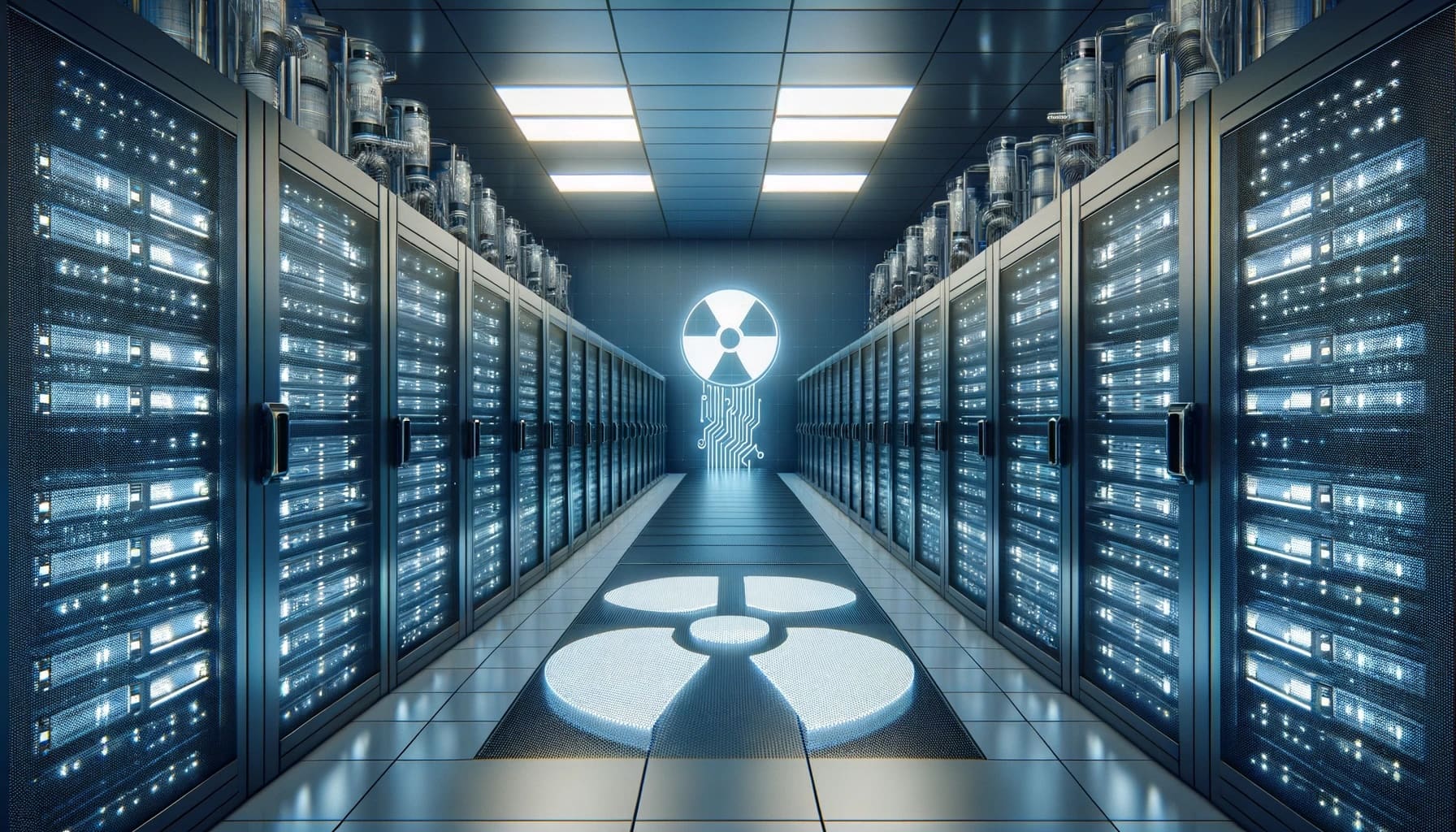Digitalization and artificial intelligence have triggered an unprecedented surge in global energy demand. Today, the world’s largest data centers consume as much electricity as entire countries. According to the International Energy Agency (IEA), their share could reach 10% of global electricity demand by 2030.
Against this backdrop, the announcement by Google, Kairos Power, and the Tennessee Valley Authority (TVA) to deploy the first Generation IV advanced nuclear reactor in Oak Ridge, Tennessee, marks a turning point in the relationship between the tech industry and the energy sector.
Google and Kairos Power: 50 MW in 2030, up to 500 MW by 2035
The project, named Hermes 2, is the first power purchase agreement (PPA) signed by a U.S. utility to buy electricity from a Gen IV reactor. The plant will initially deliver 50 MW of clean, constant energy starting in 2030, with the potential to scale to 500 MW before 2035.
The electricity will be injected into TVA’s grid and supplied directly to Google’s data centers in Montgomery County, Tennessee, and Jackson County, Alabama—critical hubs for Google Cloud and its AI workloads.
Don Moul, TVA’s President and CEO, summed it up in one powerful sentence:
“Electricity is the strategic commodity that underpins economic prosperity and the global race for artificial intelligence.”
Microsoft: nuclear energy as a strategic pillar for AI
Microsoft, closely tied to OpenAI, faces immense energy pressure due to the compute demands of training massive models like GPT-4 and GPT-5. In 2023, the company signed an agreement with Constellation Energy to power parts of its infrastructure with nuclear energy, while simultaneously hiring experts in fission and fusion to evaluate long-term projects.
Its goal is ambitious: to operate its global cloud and AI infrastructure with 100% carbon-free energy, 24/7, by 2030. Unlike Google, which is betting directly on advanced modular reactors (SMRs), Microsoft is exploring a mix of traditional reactors and experimental fusion projects.
Amazon Web Services (AWS): efficiency first, nuclear next
Amazon, through AWS, runs the largest cloud business in the world—making it one of the biggest electricity consumers globally. So far, its strategy has focused on massive wind and solar purchases (AWS is the world’s largest corporate buyer of renewable energy).
But AI has changed the game. Industry sources suggest AWS is evaluating SMR deployments for its data centers in Virginia and Ohio, though no official announcements have been made. If confirmed, Amazon would join Google and Microsoft in turning to nuclear energy to complement its renewable-heavy mix.
Oracle: quieter but watching closely
Oracle, while smaller in cloud scale than its rivals, is also expanding its data center footprint. Though more discreet, Oracle has participated in U.S. industry-government discussions about modular nuclear reactors for technology campuses.
The company’s energy footprint is not yet as massive as AWS or Google Cloud, but experts predict even medium-scale providers will need to secure firm, around-the-clock energy sources in the coming decade.
Comparing nuclear projects: power and scalability
At first glance, the 50 MW capacity of Hermes 2 may look modest compared to the massive energy appetite of hyperscale AI facilities, which can demand 100 to 300 MW per campus. But Hermes 2 is designed to scale:
- 50 MW (Hermes 2 in 2030): enough to power a medium-sized data center.
- 500 MW (by 2035): enough to cover the demand of several hyperscale AI campuses or a city of 300,000 people.
- Traditional nuclear plants: typically produce 1,000–1,500 MW, but require decades to build at enormous costs.
- Generation IV SMRs: modular, safer, faster to deploy (3–5 years), and easier to co-locate with data centers.
The key is not just capacity, but stability. Unlike solar or wind, which are weather-dependent, advanced reactors provide 24/7 firm electricity, a necessity for cloud and AI workloads that cannot tolerate downtime.
Europe: regulation versus opportunity
While U.S. tech giants move fast into advanced nuclear energy, Europe faces hurdles:
- Germany has shut down its last nuclear plants, making new private projects highly unlikely.
- France, with its large nuclear fleet, is best positioned to integrate SMRs into cloud operations.
- The UK is advancing Rolls-Royce’s modular reactor program and could become Europe’s frontrunner.
- Spain and Italy remain restrictive on nuclear energy, limiting adoption of U.S.-style nuclear-cloud partnerships.
This divergence could leave Europe’s AI ecosystem less competitive if cloud providers cannot secure the same scale of firm, carbon-free energy as their U.S. counterparts.
Reflection: energy as the new competitive advantage
The Google-Kairos Power-TVA agreement is more than an energy deal—it is a strategic shift. In the AI era, electricity has become the new oil.
Tech giants that secure reliable, scalable, and carbon-free energy will gain the upper hand in cost, resilience, and sustainability. Advanced nuclear reactors, especially modular SMRs, may become the backbone of the digital infrastructure of the future.
Frequently Asked Questions (FAQ)
Why do data centers need nuclear energy?
Because their energy use is massive and constant. AI workloads can’t depend solely on intermittent renewables. Nuclear reactors provide stable, around-the-clock electricity.
How are Gen IV reactors different from traditional ones?
They are safer, more efficient, and generate less waste. Small Modular Reactors (SMRs) can be deployed faster and in smaller units, reducing upfront costs and construction times.
How much energy does a hyperscale data center consume?
A medium-sized AI data center can draw over 100 MW of continuous power, equivalent to the electricity needs of a small city. Hyperscale facilities may require several hundred MW.
Could Europe adopt the same model?
Not easily. Nuclear restrictions in Germany, Spain, and Italy limit adoption. France and the UK, however, are investing in SMRs, making them more likely candidates.
What economic benefits will these projects bring?
Projects like Hermes 2 will create hundreds of high-paying jobs, foster university training programs in nuclear engineering, and position regions like Tennessee as hubs of both digital and nuclear innovation.
Source: prnewswire, blog.google, Revista Cloud

